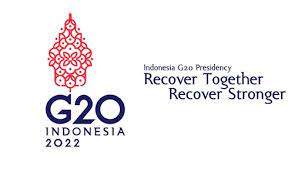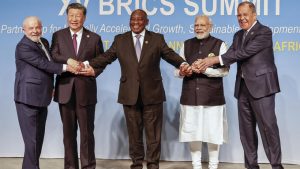
Well, though still in the weekend, I must admit this Post is a bit late, though still available, I hope, for an enjoyable weekend read.
So, I was not planning to target the BRICS South Africa gathering a second time in this Alan’s Newsletter Post, at least not quite this soon. However, the decisions taken, or not taken in some cases at this most recent BRICS Summit in Johannesburg South Africa was too ‘juicy’ to ignore. As pointed out by Rajiv Bhatia of India’s Gateway House now, more than ever the diplomatic balancing act for the new and enlarged BRICS presents an even more dramatic challenge for this Leaders’ Summit:
As BRICS heads into its 18th year, [the South Africa Leaders’ Summit is the 15th] its success and way forward will depend on the members’ ability to tackle the principal challenge of retaining its internal solidarity while balancing expansion and its impact and influence in the world.
And that central point – retaining its internal solidarity while balancing expansion – is hard to foresee. There is confusion over who was chosen to add and indeed whether they have agreed to join, and what conditions; there is confusion over the choices themselves; and there is confusion over what the enlargement is likely to mean for this Leaders’ Summit.
It is evident that the enlargement has added heft to an already significant leaders’ group. As Bhatia points out:
As a grouping of five nations, BRICS represents 27% of the world’s land area, 42% of the population, 16% of international trade, 27% of global GDP in nominal terms, and 32.5% in PPP terms.
Now the group, according to, Bhaso Ndzendze in The Conversation , is:
The enlarged grouping will account for 46.5% of the world population. Using IMF GDP data, we can deduce that it will account for about 30% of global GDP.
On a PPP basis apparently, it will represent 37 percent of global GDP according to James Kynge in the FT.
So, six countries were identified as joining the BRICS come January 2024: Argentina, Egypt, Ethiopia, Iran, Saudi Arabia and Iran. JIm O’Neill, formerly of Goldman Sachs, who has been tagged for creating the BRICS acronym suggested this about the enlargement:
… I have questioned the organization’s purpose, beyond serving as a symbolic gesture. Now that the BRICS has announced that it will add six more countries – Argentina, Egypt, Ethiopia, Iran, Saudi Arabia, and the United Arab Emirates – I pose the question again. The decision, after all, does not appear to have been decided on any clear objective, much less economic, criteria. Why, for example, was Indonesia not asked? Why Argentina and not Mexico, or Ethiopia and not Nigeria?
All good questions. Now the list, I would suggest, seems to reveal that China and Russia prevailed in the choices agreed to. Why, I suspect that is, is the BRICS enlargement includes Iran. As the NYTimes pointed out in its article on BRICS expansion:
The inclusion of Tehran — which has antagonistic relations with China’s chief rival, the United States — suggests that Chinese and Russian pressure had succeeded over the qualms of members like India, Brazil and South Africa, which maintain friendly ties with the West.
It is not unreasonable to suggest that adding Iran can only heighten the geopolitical tensions between the BRICS and others – most notably the G7, and most particularly the US with its many Iran sanctions.
Nevertheless, the hosts and commentators as quoted in the NYTimes again, tried to put the best face on it:
… South Africa, sought to put a hopeful spin on the enlargement decision in any case.
Anil Sooklal, South Africa’s representative in the BRICS negotiations, told reporters that the group needs to change with the times. “This is what BRICS is saying, let’s be more inclusive. BRICS is not anti-West,” he said.
And then of course there is the boosterism from the South Africa President, Cyril Ramaphosa as well (FP):
BRICS has embarked on a new chapter in its effort to build a world that is fair, a world that is just, a world that is also inclusive and prosperous,
As for Indonesia, an obvious choice for the BRICS to draw closer to ASEAN and Southeast Asia more broadly. Why was it not part of the enlargement group? It would seem that Indonesia has not yet decided whether it wants membership. It has not submitted, apparently, a letter of intent. Also, it appears, notwithstanding the announcement that the UAE, in fact, has not decided whether to accept the BRICS invitation, though I suppose in the end it will.
And then there is – Argentina. Argentina remains mired in a dreadful economic crisis. If in the end new members will be asked to contribute capital to the most important BRICS creation, in my opinion, the New Development Bank (NDB), Argentina is far more likely to ask for support than to be able to contribute support. In the end, I suspect it was Brazil and its current president, Lula that pressed for membership to be extended to Argentina.
As just noted, the most notable significant BRICS achievement, in my opinion, has been the creation of the NDB. There was some indication that the expanded members would all be required to contribute to the NDB. And that still may occur. Still, it is disappointing that not more was mentioned of the NDB by the current announcements.
There was, also, a fair bit of reporting, and loud statements prior to the conclusion of the Summit, that suggested the BRICS might well take steps to create some form of common currency, or steps at de-dollarization by the BRICS. But as was pointed out by Henry Poenisch in OMFIF:
A declaration released at the gathering in Johannesburg on 24 August made no mention of a common currency and instead focused on bilateral clearing – the second-best option. It stressed the importance of ‘encouraging the use of local currencies in international trade and financial transactions between Brics as well as between their trading partners.’
Yet, it seems to me the enhanced use of local currencies, except possibly the Chinese renminbi, is a rather questionable proposition. Using some of the local currencies available, and then holding the surplus for future use doesn’t seem a rather appealing course of action.
Finally, what most commentators failed to point to in their descriptions of the enlargement of the BRICS is that two of the six new members – Argentina and Saudi Arabia – are already members of the G20, as of course are all of the original BRICS. Rather than contemplating the consequence of the enlarged BRICS for global policy progress, it strikes me targeting the efforts, and today’s evident hardships in advancing global governance in the face of rising geopolitics by focusing attention on the G20 might well be a more fruitful avenue of inquiry if one was examining global summitry and the efforts to advance global governance. Looking again, at Jim O’Neill he turns, not reasonably, in this direction:
What the world really needs is a resurrected G20, which already includes all the same key players, plus others. It remains the best forum for addressing truly global issues such as economic growth, international trade, climate change, pandemic prevention, and so on. Though it now faces significant challenges, it still can reclaim the spirit of 2008-10, when it coordinated the international response to the global financial crisis. At some point, the US and China will have to overcome their differences and allow the G20 to return to its central position.
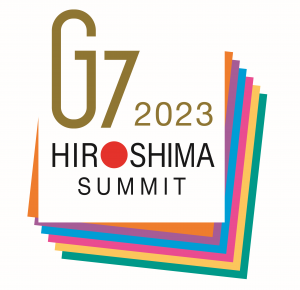 Yup, a little late in the weekend it is. But then for some Monday is a holiday. Mea culpa, but I was deep into completing a draft chapter for a yet to appear volume – which, in fact is scheduled to be released by 2025. The publication year, by the way, is important. My chapter will be part of a planned edited volume by Edward Elgar Publishing. There will be many chapters, so I am told, that will review and analyze the G7. It will do so on the 50th anniversary of the initiation of the G7 Leaders Summit. Yup, Rambouillet, the acknowledged first G7 Leaders Summit – it was actually, the G6 – France, Germany, Italy, Japan, UK, US at that moment in time – met in 1975. All the chapters, I suspect, will cover aspects of this ‘First Informal’, the G7, and, I suspect, the other Informals as well – that is the G20 and the BRICS.
Yup, a little late in the weekend it is. But then for some Monday is a holiday. Mea culpa, but I was deep into completing a draft chapter for a yet to appear volume – which, in fact is scheduled to be released by 2025. The publication year, by the way, is important. My chapter will be part of a planned edited volume by Edward Elgar Publishing. There will be many chapters, so I am told, that will review and analyze the G7. It will do so on the 50th anniversary of the initiation of the G7 Leaders Summit. Yup, Rambouillet, the acknowledged first G7 Leaders Summit – it was actually, the G6 – France, Germany, Italy, Japan, UK, US at that moment in time – met in 1975. All the chapters, I suspect, will cover aspects of this ‘First Informal’, the G7, and, I suspect, the other Informals as well – that is the G20 and the BRICS.
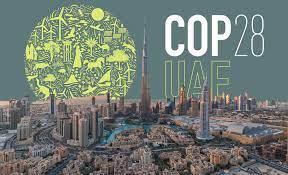
 We are definitely in the midst of Global Summitry gatherings. With the BRICS Summit just recently ended, we are deep into the G20 weekend gathering in New Delhi. So much commentary has accompanied these summitry gatherings. But I caution casual observers and readers: there are way too many assessments and conclusions drawn by all those folks that unfortunately barely pay attention to Global Summitry through much of the year. You can see this in the various ‘hair on fire’ commentaries in the assessments and consequences of the actions of key players in both the BRICS and now especially with the G20. Too many declarations of the G20 demise; firm conclusions that China and Russia would block any consensus statement that sought to condemn Russia’s aggression against Ukraine; the fragmentation of global summitry with the rise of the BRICS plus and the demise of the G20 with leaders from Russia and China choosing to absent themselves from summit.
We are definitely in the midst of Global Summitry gatherings. With the BRICS Summit just recently ended, we are deep into the G20 weekend gathering in New Delhi. So much commentary has accompanied these summitry gatherings. But I caution casual observers and readers: there are way too many assessments and conclusions drawn by all those folks that unfortunately barely pay attention to Global Summitry through much of the year. You can see this in the various ‘hair on fire’ commentaries in the assessments and consequences of the actions of key players in both the BRICS and now especially with the G20. Too many declarations of the G20 demise; firm conclusions that China and Russia would block any consensus statement that sought to condemn Russia’s aggression against Ukraine; the fragmentation of global summitry with the rise of the BRICS plus and the demise of the G20 with leaders from Russia and China choosing to absent themselves from summit.
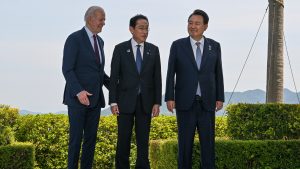
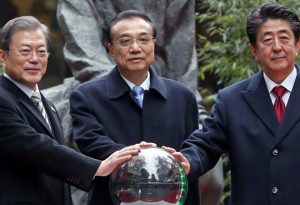 While I have suggested earlier that I don’t think an initial focus on building regional or multilateral institutions is necessarily the best first step in global governance and possibly a means to ‘tone down’ geopolitical competition rhetoric and action, I am now about to contradict myself and this position. For, in the end, there are some obvious regional and international institutions that could encourage collaborative action and push global governance collaboration. And, in fact, I have in mind an obvious one that has – as a current Chinese slang term might well describe it – ‘tang ping’ 躺平 – or ‘lying flat’. It is the Trilateral Summit.
While I have suggested earlier that I don’t think an initial focus on building regional or multilateral institutions is necessarily the best first step in global governance and possibly a means to ‘tone down’ geopolitical competition rhetoric and action, I am now about to contradict myself and this position. For, in the end, there are some obvious regional and international institutions that could encourage collaborative action and push global governance collaboration. And, in fact, I have in mind an obvious one that has – as a current Chinese slang term might well describe it – ‘tang ping’ 躺平 – or ‘lying flat’. It is the Trilateral Summit. So, the International Studies Association (ISA) just concluded in Montreal
So, the International Studies Association (ISA) just concluded in Montreal